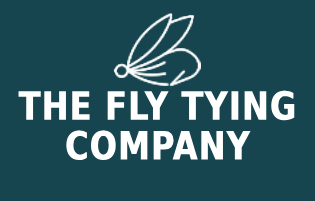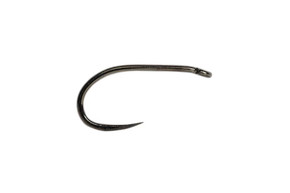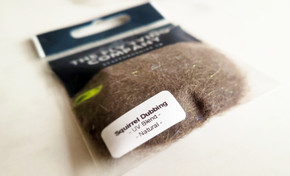Origin & History
The Diawl Bach (Welsh for “Little Devil”) is one of the most famous stillwater trout flies in the UK. It originates from Wales, where it was developed to imitate a range of aquatic insects, especially buzzer pupae and nymphs. Its slim, dark profile and subtle flash have made it a go-to pattern on reservoirs and lakes across Britain. The Diawl Bach is now considered a universal stillwater fly, effective throughout the season and versatile in countless situations.
Materials
- Hook: 1X–2X long nymph hook, sizes 10–16
- Thread: Brown or black 8/0 or 70D
- Tail: 3–5 strands brown or red cock fibres
- Body: Peacock herl or seal’s fur dubbing
- Ribbing: Optional – Fine copper or gold wire
- Thorax: Additional peacock herl or dark synthetic dubbing
- Optional Cheeks: Red or holographic tinsel strips
Step-by-Step Tying
- Secure the Hook: Place the hook in the vise and start the thread at the eye, winding down to the bend.
- Form the Tail: Tie in 3–5 strands of cock hackle fibres at the bend.
- Add Ribbing (Optional): Tie in a strand of copper wire for durability and segmentation.
- Create the Body: Wind peacock herl or dubbing up the shank to form a slim, tapered body.
- Secure Ribbing: If used, counter-wrap the wire rib in even turns up the body.
- Build the Thorax: Add a small ball of peacock herl or dark dubbing behind the hook eye.
- Add Cheeks (Optional): Tie in short strips of red or holographic tinsel on each side.
- Finish: Whip finish, trim, and apply varnish for durability.
Variations
- Classic Diawl Bach: Slim dark body with peacock thorax.
- Cheeked Diawl Bach: Adds red holographic cheeks for attraction.
- Flashback Diawl Bach: Uses a flashback wingcase for extra visibility.
- Beaded Diawl Bach: Incorporates a gold or tungsten bead for depth control.
- Claret Diawl Bach: Substitutes claret dubbing for darker conditions.
Seasonality & What It Represents
The Diawl Bach is effective from spring through autumn, excelling during buzzer hatches. It can represent buzzers, olives, or general nymph forms, making it one of the most adaptable stillwater flies.
Tackle & Setup
- Rod: 9–10 ft 5–6 weight rod
- Line: Floating or intermediate line
- Leader: 9–12 ft tapered leader
- Tippet: 4–6 lb fluorocarbon
- Presentation: Fished as part of a team of flies, washing-line setup, or static buzzer rigs
Summary Table
| Feature | Details |
|---|---|
| Hook Size | 10–16 nymph hook |
| Tail | 3–5 cock hackle fibres |
| Body | Peacock herl or dubbing |
| Ribbing | Optional copper or gold wire |
| Thorax | Peacock herl or dark dubbing |
| Cheeks | Optional red/holographic tinsel |
| Seasonality | Spring to autumn |
| Best For | Buzzer hatches, olives, and stillwater nymph feeding |












